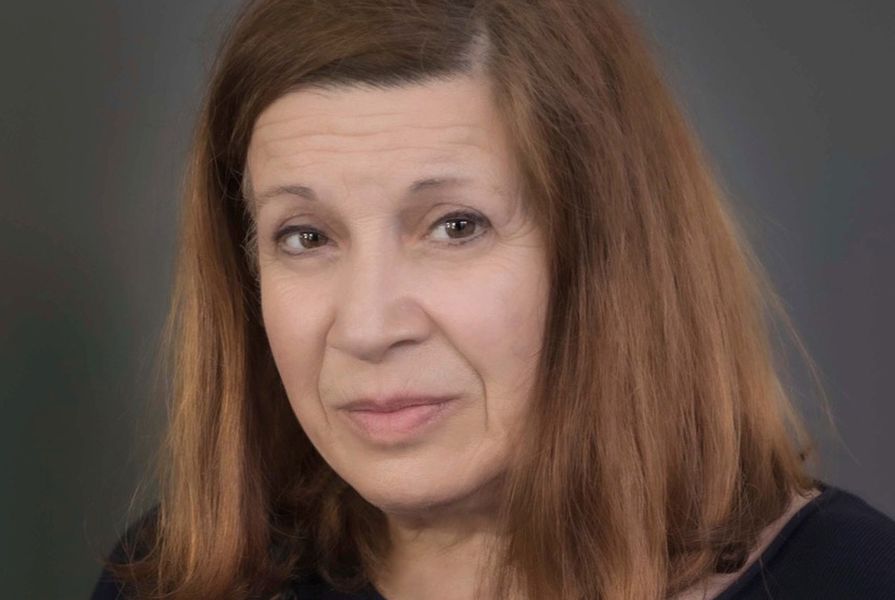Maggie Edmond was awarded the Australian Institute of Architects 2003 Gold Medal with Peter Corrigan retrospectively at the National Awards on 29 October 2023. Twenty years after the initial decision, the 2023 Gold Medal Committee had reconvened to reassess and honour Maggie Edmond. She is now celebrated as a Gold Medallist, the highest honour bestowed by the Institute. The surprise announcement received a spontaneous standing ovation from an audience of peers.
This acknowledgment is important and has great meaning – for the profession as a whole and for Maggie personally. In celebration of Maggie, I want to reflect on how change happens, and the importance of change coming from within organisations.
Maggie is a quietly spoken person of fortitude and humility. She had privately dreamt of this moment.
For four decades Maggie has been a leading architect in Australia. She holds an Honorary Doctorate from the University of Melbourne. The work of Edmond and Corrigan, in partnership, holds a pivotal place in Australian architecture. Their influence on a generation of Melbourne and Australian architects has been extensively documented. As many, including Jennifer Hocking, have said, it is hard to think of a major recent Melbourne architect who had not been decisively influenced in some way by Edmond and Corrigan.1 Known for their profound examination of cultural issues, they used modest means to make public statements. The practice was awarded 35 RAIA state awards, three Victorian Architecture Medals and four National Architectural Design Awards, as well as the National ACI Architecture Award in 1982 for their contribution to Australian architectural theory and debate.
In addition to her architectural work, Maggie was Deputy Chancellor of Deakin University (2003– 2007), a Council member of Deakin University (1999–2011), part of Campus Planning Committee, Deakin University (2003–2011) during a time of expansion, and a member of the Melbourne Zoological Board (1982–1989).
Designed by Alan Kueh, the cover of Architecture Australia March/April 2003 showed Edmond and Corrigan’s Academic Centre and St Mary’s College alongside portraits of Peter and Maggie.
Image: Architecture Media
Recognising Maggie
Initially, the proposition for a correction to the 2003 Gold Medal stemmed from the lived experience of Peter Malatt and Philip Goad, who had both worked for Edmond and Corrigan in the 1980s. The proposal was formalised by the Australian Institute of Architects Victorian Honours Committee, which is responsible for writing Civil Honours submissions, Life Fellowship and Gold Medal nominations.
The committee agreed that Maggie’s contribution hadn’t been adequately recognised. We consulted widely and produced documentation. I encourage you to read Philip Goad’s tribute, outlining Maggie’s career, published in Architecture Australia:
While Corrigan often took a lead design role, the pair always collaborated, and resoundingly so as each project rumbled its way to completion. From the very beginning of the firm’s life, its name made this clear.
– Philip Goad
At first, I thought we would need to undertake a forensic search for the required scholarly evidence. Then I reread Cities of Hope, by one of Australia’s most respected historians Conrad Hamann.2 The answer was clear in the second paragraph on the newly formed practice. Bingo! Hamann outlines the extraordinary influence of Edmond and Corrigan’s work. Following several years of careful scholarly research and interviews with the office, Hamann makes the joint contribution of the partners clear, and throughout the book he refers to the work of the practice as that of ‘Edmond and Corrigan’.3
Edmond and Corrigan were like many architectural partnerships. They came together as architects gradually, at the start of 1975. There was no formal partnership agreement… . In public presentations, and in the dealings with builders, consultants and clients or when a structural, legal or planning assessment had to be made, generally Maggie Edmond had to be on hand. She dealt with virtually all the correspondence and supervision for their third award-winning design, the Dandenong TAFE building. She wrote the brief, handled the various client groups, and was the link to consultants for the RMIT Building Project. She assisted in competition designs, particularly that of the parliament House in 1979. So, she was hardly the clear-cut ‘business partner’ often seen in architectural offices. She also designed, developed and supervised the bulk of the smaller work that came in. A great many domestic alterations and extensions have been worked on by the office, and these far outnumbered the larger design projects. In the majority of cases the contribution of both partners was significant and varied. It therefore seems appropriate to write of Edmond and Corrigan collectively when discussing designs from the office.
Conrad Hamann, Cities of Hope
Clearly there would be no Edmond and Corrigan without Edmond.
Recognising partnerships
There is precedent for awarding the Gold Medal to partnerships. This recognises the indispensable role of multiple individuals within partnerships – think John Denton, William Corker, Barrington Marshall in 1996; Lindsay and Kerry Clare in 2010; Stephen Ashton, Howard Raggatt and Ian McDougall in 2016; and Hank Koning and Julie Eizenberg in 2019.
The proposal to recognise Maggie was supported by the Institute’s national executive and presidents. Past National President Tony Giannone outlined a formal process, ensuring an opportunity for deliberation by the Institute. Our committee submitted a formal proposal to the 2023 Gold Medal Committee.4. It was unanimously endorsed.
Importantly, the correction to the 2003 Gold Medal came from within the Australian Institute of Architects, via its own processes of review and reflection. In my view, it is incumbent on an awarding organisation to do the work internally to create the conditions for change. That work (on inclusion, gender and equity) happens over many years and is important to the future of the organisation.5 It should not be the work of potential award recipients to battle for recognition of their partners, nor the project of a younger generation.
When Robert Venturi asked that Denise Scott Brown be included in the 1991 Pritzker Prize, he was told that would not be possible. As Gareth Cook explains, “The couple [Scott Brown and Venturi] decided that he had to accept the honour, because their firm was struggling financially, and the hundred-thousand-dollar award and the recognition would help enormously.”6 Scott Brown didn’t attend the ceremony. Such matters should not be a partnership’s private dilemma, nor that of future recipients. It is incumbent upon the awarding organisation to change, and to bravely retrospectively award partnerships if required.
How does change happen?
I have often considered how change happens. How does one of many good ideas find its way to the surface? There are so many worthwhile good ideas and causes that all require attention, patience, advocacy and follow up. People are busy, spread thin and, in the case of the Institute, many are volunteers with other work pressures. So, how does change happen?
First, the conditions need to be right. This happens because countless hours of advocacy have made the conditions right. Trust and relationships matter. A willingness to listen matters. Second, a fortuitous alignment of people and attitudes needs to exist beyond the initial idea being ‘good’. The idea needs to resonate with a chain of people who all take action. They consult, research, write, check, and champion the cause to transform it into an outcome. In other words, a lot of people need to say yes, and then put the work in.
Recognising Maggie involved willingness and engagement from those in power. This included the CEO’s consent, the past and present National Presidents willingness to re-form the Gold Medal Committee across international time zones – achieving unanimous support. Then, the willingness of Katelin Butler, editorial director, to hold pages in Architecture Australia, and commission an essay before a decision was made, in order to meet a print deadline. Then space was found by Cameron Bruhn at the National Awards Ceremony in Canberra, which didn’t detract from the 2023 Gold Medallist Kerstin Thompson.
Change happens when an initial idea is good, the right conditions have been created, and an alignment of willingness prevails.
The news, initially delivered to Maggie by Gold Medal Committee Chair and National President Shannon Battisson at a Carlton wine bar before Maggie dashed off to a school performance by a grandchild, was gracefully and emotionally accepted. She acknowledged the restorative impact of the news, and said that she had dreamt of this moment. It is a pleasure to see Maggie, who has never sought attention, awarded the Institute’s highest honour and take her proper place in architectural history and culture. 2003 doesn’t seem like a long time ago yet, optimistically, perhaps it is.
Congratulations Maggie.
This article was republished with permission from Parlour. Read the original article here.
- Jennifer Hocking, in Leon van Schaik and Nigel Bertram (eds) Building 8: Edmond and Corrigan at RMIT 1:10 Essays (Schwartz: Transition, 1996).
- Conrad Hamann taught architectural history at Monash University Melbourne for 25 years, with nine as Associate Professor, then 11 years as Associate Professor Architectural History at RMIT University. He has changed the way we understand Australian architecture. He was awarded a Harkness Scholarship and the 2021 National AIA Neville Quarry Prize for Architectural Education.
- Conrad Hamann Cities of Hope: Australian Architecture and Design by Edmond and Corrigan, 1962-92, (Oxford University Press, 1994) p.41.
- Shannon Battisson (Chair), Tony Giannone, Julie Eizenberg, John Wardle, Hank Koning.
- For example, advocacy by the Institute’s National Gender Equity Committee, Parlour, Champions of Change Architecture Group.
- Gareth Cook, “What About Denise?“, The New Yorker, 15 April 2013.


















